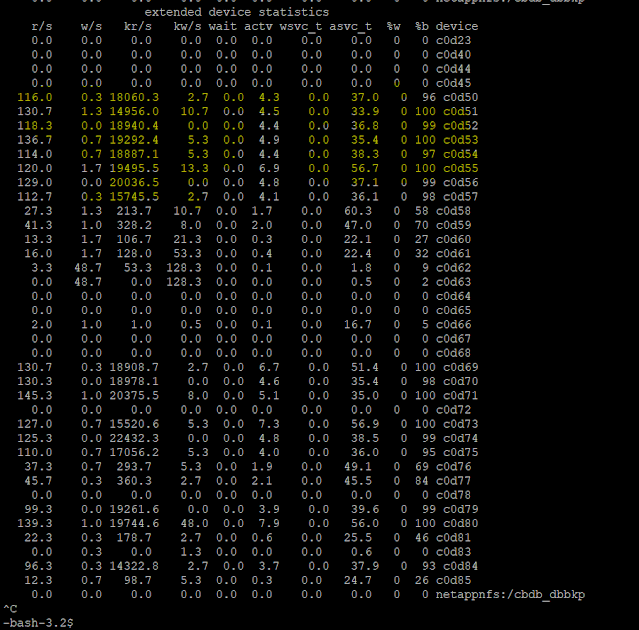Solaris Linux iostat in DBAs view

Background When troubleshooting any database performance issue, we need to understand that it can happen in two possible sequence, 1. Additional large utilization (load) on database server causing the delay in normal database operation. Which can be from newly added application component, query that is running abnormally (e.g plan change), new parallel execution etc.. 2. A change or suboptimal operation on underlying hardware/software layer that causes the default load of the database to take more time than it usually does. Here database system is not the culprit but the victim. It is trying its best to perform as it used to, but a bottleneck in different layer that is not in the control of database is causing the delay. Example Below is a demonstration using iostat command in Solaris environment running Oracle database, which shows the metric differences while database system is experiencing performance delays. In both situation the result is the same, distorted db performance wher